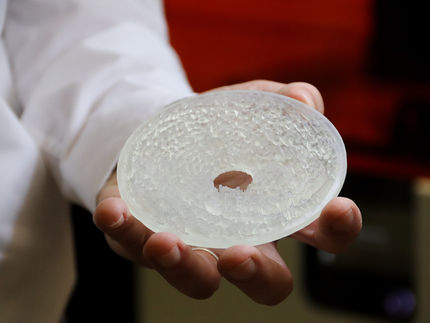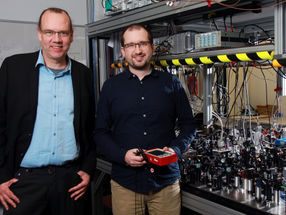New measurement technique will help in fight against cancer
Advertisement
A new technique to catch cancer early has taken an important step forward thanks to the National Physical Laboratory (NPL). NPL's 'phantoms' will ensure a new screening technique can be relied upon by hospitals to identify early signs of cancer.
The technique, Optical Coherence Tomography (OCT), is an increasingly popular method for looking beneath the surface of certain materials, notably human tissue. It is higher resolution and much quicker than techniques such as MRI or ultrasound, with no ionising radiation, making it ideal for detecting changes in tissue structure which can indicate the early stages of cancer. However creating such images requires high precision, and any inaccuracy can lead to incorrect assumptions about cell disruption. This can mean missing opportunities for early, potentially life-saving treatment.
A new NPL product, called a 'point-spread phantom', will eliminate the risk of such errors. The phantoms are translucent cylinders of resin containing specially arranged particles designed to reflect light in a very specific way. By viewing the phantom with an OCT machine and analysing the image with NPL software, users can be certain the machine is producing accurate images, which they can rely on for important medical decisions.
These 'phantoms' will also allow manufacturers of OCT technology to meet the necessary standards to guarantee to hospitals that their machines are sufficiently accurate. This will help speed the route to market of products using this important new technology, and assure hospitals of their ongoing reliability.
Most read news
Other news from the department research and development

Get the life science industry in your inbox
By submitting this form you agree that LUMITOS AG will send you the newsletter(s) selected above by email. Your data will not be passed on to third parties. Your data will be stored and processed in accordance with our data protection regulations. LUMITOS may contact you by email for the purpose of advertising or market and opinion surveys. You can revoke your consent at any time without giving reasons to LUMITOS AG, Ernst-Augustin-Str. 2, 12489 Berlin, Germany or by e-mail at revoke@lumitos.com with effect for the future. In addition, each email contains a link to unsubscribe from the corresponding newsletter.






























































